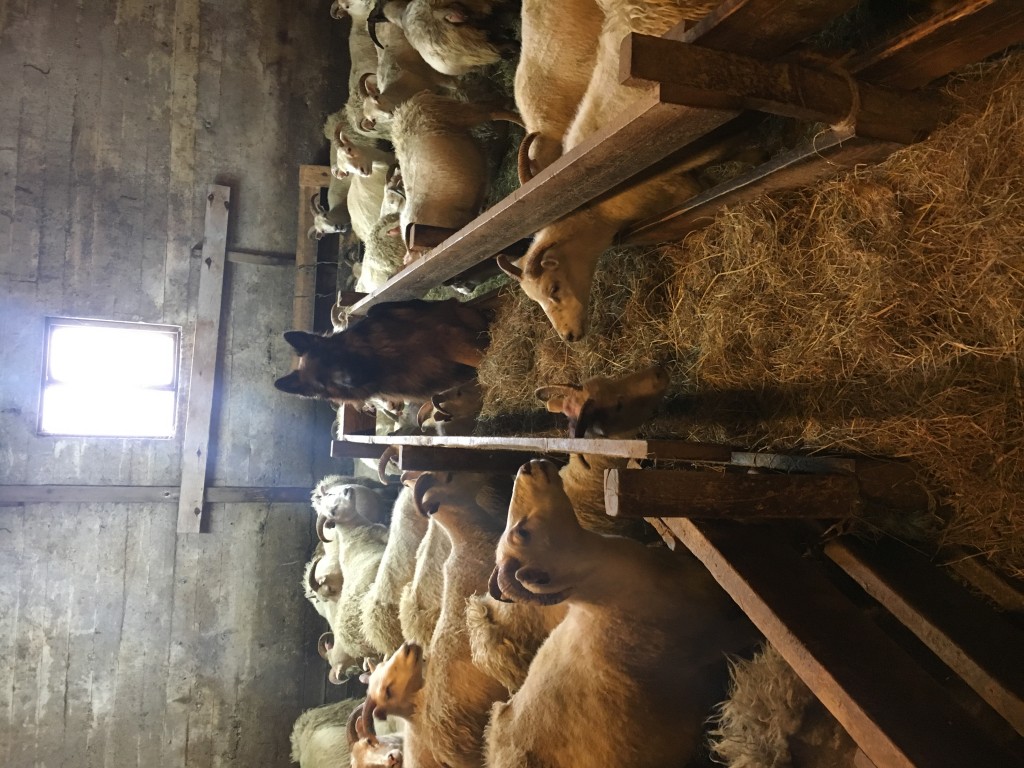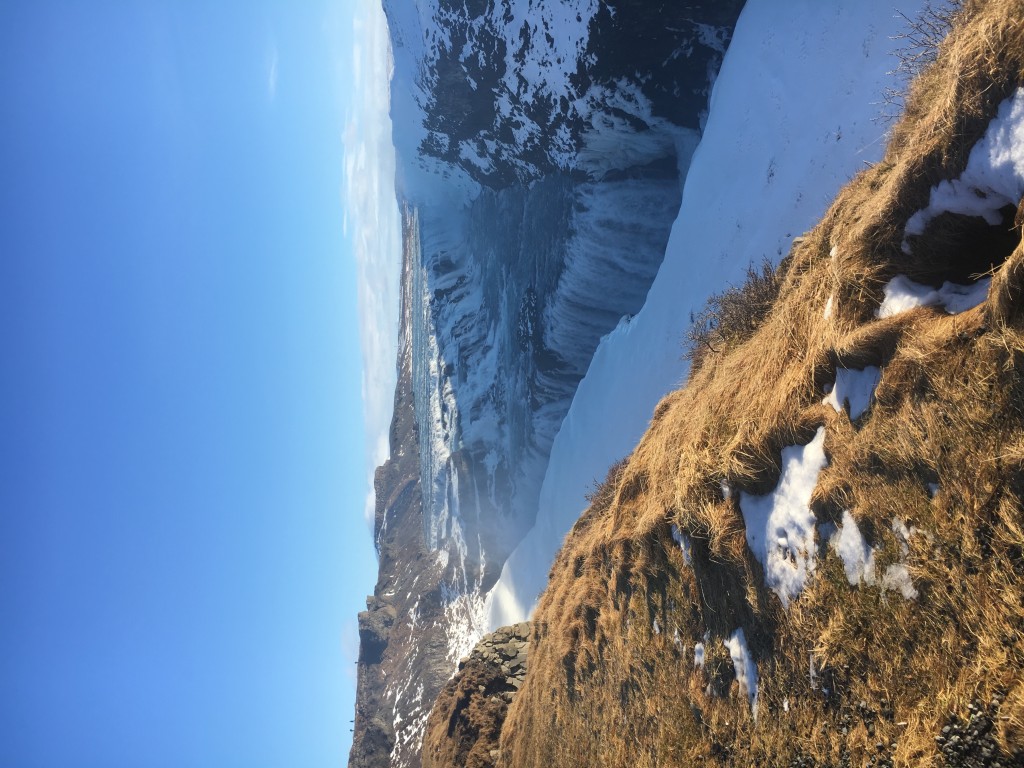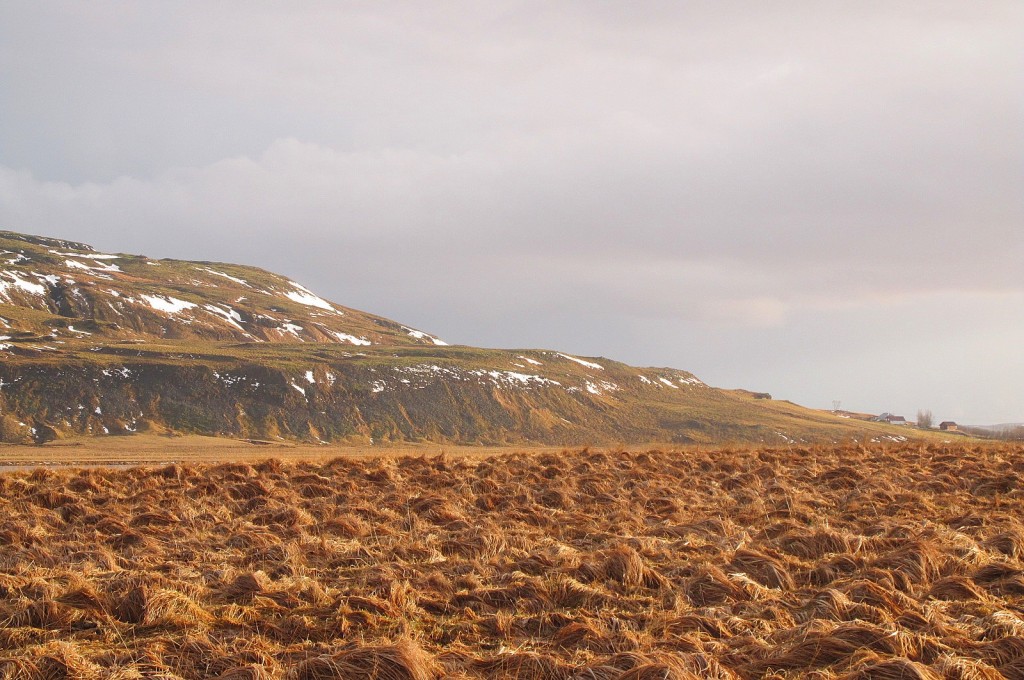
Sheep farming is done by about 2,000 farmers across Iceland. The most common and profitable color is white for their wool. In the picture, all of these sheep are pregnant, usually producing two lambs. Most lambs are taken to the slaughter house at about 6 months old to be butchered for meat. The other lambs are kept and used to make more offspring.

This is Gullfoss one of Iceland’s most popular waterfalls. It was protected in 1979 so that it could not be dammed and used for electricity generation.

In the foreground you can see frost heaves in the ground. This occurs from Iceland’s temperate climate . Iceland is quickly eroding quickly mainly from the volcanic activity such as ash, but a major factor is the diverging plate boundary that goes through the center of Iceland.

On our trip to South Iceland we made a quick visit to Sólheimajökull Glacier. Sólheimajökull is known for the speed at which it is melting. The glacier has shrunk over a kilometer in the last decade. About eleven percent of Iceland’s surface is covered by glaciers, and tourists from around the world are coming to see them before they melt away.

One of the most popular crops in Iceland is the tomato, and Sólheimar’s own Sunna greenhouse produces 18 tonnes of tomatoes each year. Recently the group ate lunch at Fridheimar Farm, the largest tomato producer in Iceland accounting for about 18% of the market. The greenhouse doubles as a restaurant, allowing you to eat delicious tomato soup feet away from where the tomatoes are being grown.

We were lucky enough to stay overnight in a Icelandic turf house. The house was owned by Hannes and Christine, and was actually Hannes’ childhood home. The interior of the house resembled how it looked decades ago, as it was furnished with old family photos, vintage weaving tools, and a functioning wood stove. The trip was a fun and educational as we experienced first hand a slice of life of Iceland 60 years ago.
